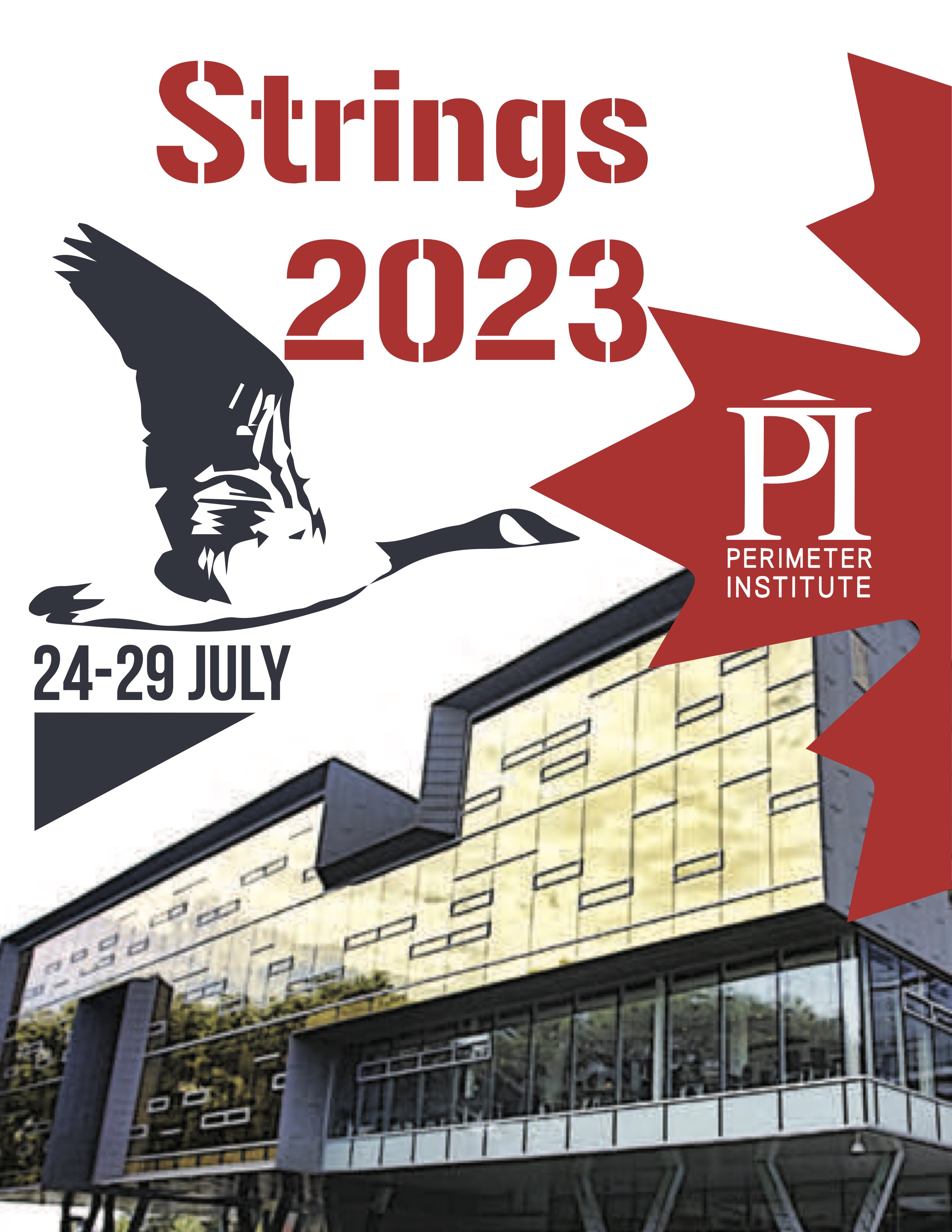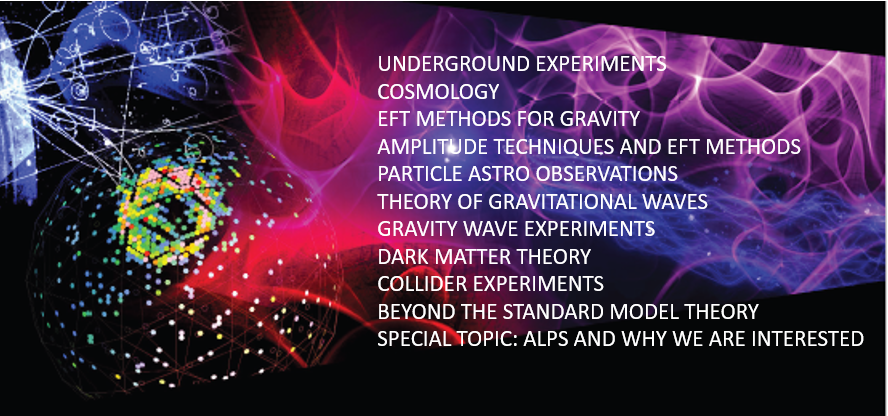Format results
-
Talk
-
Opening Remarks
-
Katie Mack Perimeter Institute
-
Aaron Vincent Queen's University
-
-
Dark and visible structures with dissipative dark matter
Sarah Shandera Pennsylvania State University
-
-
-
The First Stars in the Universe as Dark Matter Laboratories
Cosmin Ilie Colgate University
-
Probing Atomic Dark Matter using Simulated Galactic Subhalo Populations
Caleb Gemmell University of Toronto
-
Dark matter at high redshifts with JWST
Julian Munoz The University of Texas at Austin
-
(Dark) Baryogenesis through Asymmetric Reheating in the Mirror Twin Higgs.
Andrija Rasovic University of Toronto
-
-
Talk
-
Lessons of the Effective Field Theory Treatment of General Relativity
John Donoghue University of Massachusetts Amherst
-
Positivity Bounds and Effective Fields Theories (A Review)
Andrew Tolley Imperial College London
-
Holography and its implications for quantum gravity - VIRTUAL
Johanna Erdmenger University of Würzburg
-
A hike through the Swamp
Miguel Mlontero IFT Madrid
-
Piecing Together a Flat Hologram
Sabrina Pasterski Perimeter Institute for Theoretical Physics
-
Open Discussion with today's speakers (Donoghue, Erdmenger, Montero, Pasterski, Tolley)
-
John Donoghue University of Massachusetts Amherst
-
Johanna Erdmenger University of Würzburg
-
Miguel Mlontero IFT Madrid
-
Sabrina Pasterski Perimeter Institute for Theoretical Physics
-
Andrew Tolley Imperial College London
-
-
Panel Discussion - Strengths and limitations of EFT (Donoghue, Knorr, Montero, Quevedo, Tolley)
-
John Donoghue University of Massachusetts Amherst
-
Miguel Mlontero IFT Madrid
-
Fernando Quevedo University of Cambridge
-
Carlo Rovelli Aix-Marseille University
-
Andrew Tolley Imperial College London
-
-
-
-
Talk
-
-
QPV: An Overview and Reflections
Harry Buhrman Centrum Wiskunde & Informatica
-
Popescu-Rohrlich correlations imply efficient instantaneous nonlocal quantum computation
Anne Broadbent University of Ottawa
PIRSA:23090023 -
Non-local quantum computation meets quantum gravity
Alex May Perimeter Institute for Theoretical Physics
-
Quantum Error-Correction and Holographic Task
Beni Yoshida Perimeter Institute for Theoretical Physics
-
-
Protocols and Implementations of Quantum Position Verification
-
Eric Chitambar University of Illinois Urbana-Champaign
-
Paul Kwiat University of Illinois
-
-
-
-
Talk
-
Talk 44 - Large N von Neumann Algebras and the renormalization of Newton's constant
Elliott Gesteau California Institute of Technology (Caltech)
-
Talk 88 - Type II_1 algebras for local subregions in quantum gravity
Antony Speranza University of Amsterdam
-
Talk 124 - von Neumann algebras in JT gravity with matter
David Kolchmeyer Massachusetts Institute of Technology
-
Talk 61 - Horizons are Watching You
Gautam Satishchandran -
An SYK model with a scaling similarity.
Juan Maldacena Institute for Advanced Study (IAS) - School of Natural Sciences (SNS)
-
Petz recovery from subsystems in conformal field theory
Shreya Vardhan Stanford University
-
-
-
-
Talk
-
Opening Remarks
Robert Myers Perimeter Institute for Theoretical Physics
-
-
Research Talk 2 - Burns holography
Atul Sharma Harvard University
-
Research Talk 3 - Swampland and a Unification of the Dark Sector
Cumrun Vafa Harvard University
-
Research Talk 4 - A universal pattern at infinite field distance
Irene Valenzuela -
-
Research Talk 5 - Crossing beyond scattering amplitudes
Hofie Hannesdottir -
-
-
Talk
-
-
Talk
-
-
[Virtual] Exploring Quantum Science with Machine Learning
Di Luo Massachusetts Institute of Technology (MIT)
-
Near Term Distributed Quantum Computation using Optimal Auxiliary Encoding
Abigail McClain Gomez -
-
-
Automated Characterization of Engineered Quantum Materials
Eliska Greplova Delft University of Technology
-
-
-
-
Talk
-
-
Simulating one-dimensional quantum chromodynamics on a quantum computer: Real-time evolutions of tetra- and pentaquarks
Christine Muschik Institute for Quantum Computing (IQC)
-
-
Five short talks - see description for talk titles
-
Barbara Soda Perimeter Institute for Theoretical Physics
-
Dalila Pirvu Invisible Technologies
- Leonardo Solidoro, Pietro Smaniotto, Kate Brown
-
-
First observations of false vacuum decay in a BEC
Ian Moss Newcastle University
-
Building Quantum Simulators for QuFTs
Jorg Schmiedmayer Technical University of Vienna
-
-
-
-
Talk
-
-
-
Quantum Ethics Project Workshop: Teaching and incorporating ethics into quantum
-
Anna Knörr Harvard University
- Sara Marsh, Joan Arrow
PIRSA:23050104 -
-
-
-
-
-
-
-
Talk
-
Welcome and Opening Remarks
Niayesh Afshordi University of Waterloo
-
Quantum Gravity and its connection to observations
Astrid Eichhorn Universität Heidelberg
-
-
The Spacetime of Acceleration
Ruth Gregory King's College London
-
What is the simplicity of the early universe trying to tell us?
Latham Boyle University of Edinburgh
-
Are we considering enough? Inclusivity in Quantum Gravity and Cosmology
Jarita Holbrook University of Edinburgh
-
-
Emergent Metric Space-Time from the BFSS Matrix Model
Robert Brandenberger McGill University - Department of Physics
-
-
Talk
-
Lecture 1: Introduction and Overview; Bootstrapping Ising mixed correlator
-
Ning Su Università di Pisa
- Aike Liu
-
-
-
-
Lecture 2: Bootstrapping global symmetries. Cutting surface algorithm
Ning Su Università di Pisa
-
-
-
-
-
-
Talk
-
Welcome and Opening Remarks
Elie Wolfe Perimeter Institute for Theoretical Physics
-
Tutorial 1
Robert Spekkens Perimeter Institute for Theoretical Physics
-
Graphical models: fundamentals, origins, and beyond
Steffen Lauritzen University of Copenhagen
-
Towards standard imsets for maximal ancestral graphs
Robin Evans University of Oxford
-
-
Correlations from joint measurements in boxworld and applications to information processing
Mirjam Weilenmann Austrian Academy of Sciences
PIRSA:23040107 -
Observational Equivalences Between Causal Structures with Latent Variables
Marina Maciel Ansanelli Perimeter Institute for Theoretical Physics
-
-
-
Dark Matter, First Light
New observational programs and techniques are opening a window to the first galaxies in the universe and bringing surprises along the way. In this workshop, we'll explore how dark matter phenomenology may have impacted the first stars and galaxies, focusing on how improved modeling and simulations can allow us to use new and upcoming high-redshift data to gain insight into dark matter's fundamental nature.
Sponsored in part by:

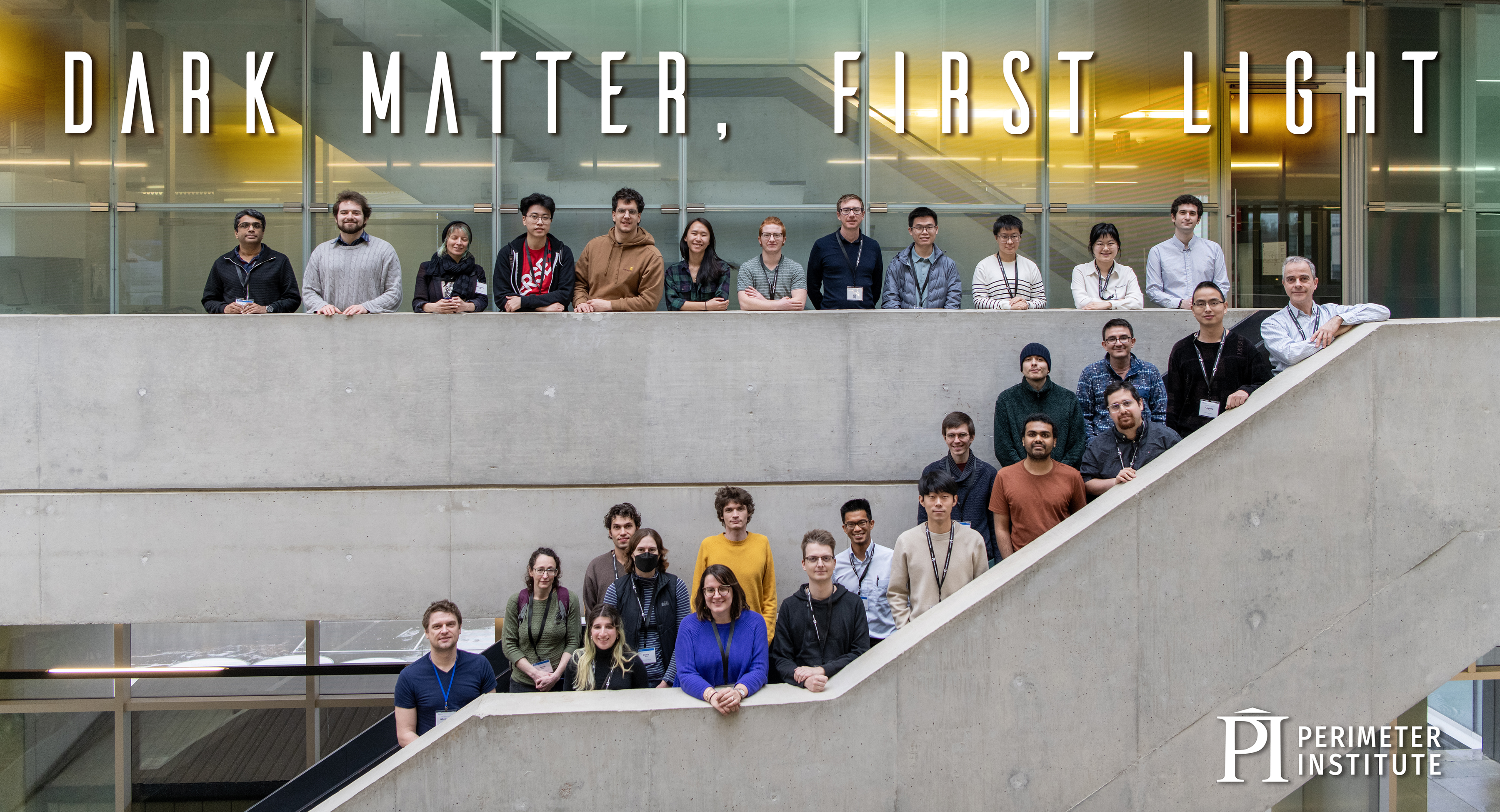
-
Puzzles in the Quantum Gravity Landscape: viewpoints from different approaches
Unraveling the quantum nature of gravity is one of the most pressing problems of theoretical physics. Several ideas have been put forward and resulted in a number of theories of quantum gravity. While these theories have explored different facets of the “quantum gravity landscape”, all viable approaches should ultimately make contact with observations, and answer exciting questions in cosmology and black-hole physics.
Sharing knowledge, exchanging ideas, and building a dictionary between different theories are crucial steps toward answering these questions, efficiently contrasting different theories, and ultimately reaching a deeper understanding of our Universe.
This conference will contribute to these goals by bringing together leading experts in different approaches to quantum gravity, gravitational effective field theory, black-hole physics, and cosmology. We will focus on specific puzzles in quantum gravity and their resolutions within different approaches. The conference will be highly interactive, with plenty of time to discuss common problems, understand the big picture, and develop novel connections between fields.Registration: Registration is now open, and both in-person and virtual participation is welcome. Online participants will be able to interact on an equal footing in question sessions and discussions. In-person attendance is limited and will be approved on a first-come, first-served basis. Talks are by invitation only, but in-person participants are encouraged to apply to present a poster.
Spam warning: There is an increasing number of scam agencies reaching out to conference speakers and attendees. Perimeter Institute does not use third-party agencies. We advise speakers and attendees to ignore emails and not to provide any details to anyone who is not from Perimeter Institute.
Confirmed Speakers and Panelists:
- Abhay Ashtekar (Penn State University)
- Robert Brandenberger (McGill University)
- Luca Buoninfante (Nordita)
- Xavier Calmet (University of Sussex)
- Francesco di Filippo (Kyoto University)
- Bianca Dittrich (Perimeter Institute)
- John Donoghue (University of Massachusetts)
- Astrid Eichhorn (CP3-origins)
- Johanna Erdmenger (Würzburg University)
- Ghazal Geshnizjani (Perimeter Institute)
- Ruth Gregory (King's College)
- Lavinia Heisenberg (Heidelberg University)
- Bob Holdom (University of Toronto)
- Benjamin Knorr (Nordita)
- Renate Loll (Radboud University Nijmegen)
- Miguel Montero (IFT Madrid)
- Rob Myers (Perimeter Institute)
- Sabrina Pasterski (Perimeter Institute)
- Fernando Quevedo (Cambridge University)
- Lisa Randall (Harvard University)
- Kasia Rejzner (York University)
- Mairi Sakellariadou (King's College)
- Lee Smolin (Perimeter Institute)
- Kellogg Stelle (Imperial College)
- Sumati Surya (Raman Research Institute)
- Andrew Tolley (Imperial College)
- Neil Turok (University of Edinburgh)
- Pedro Vieira (Perimeter Institute)
- Yasaman Yazdi (Imperial College)
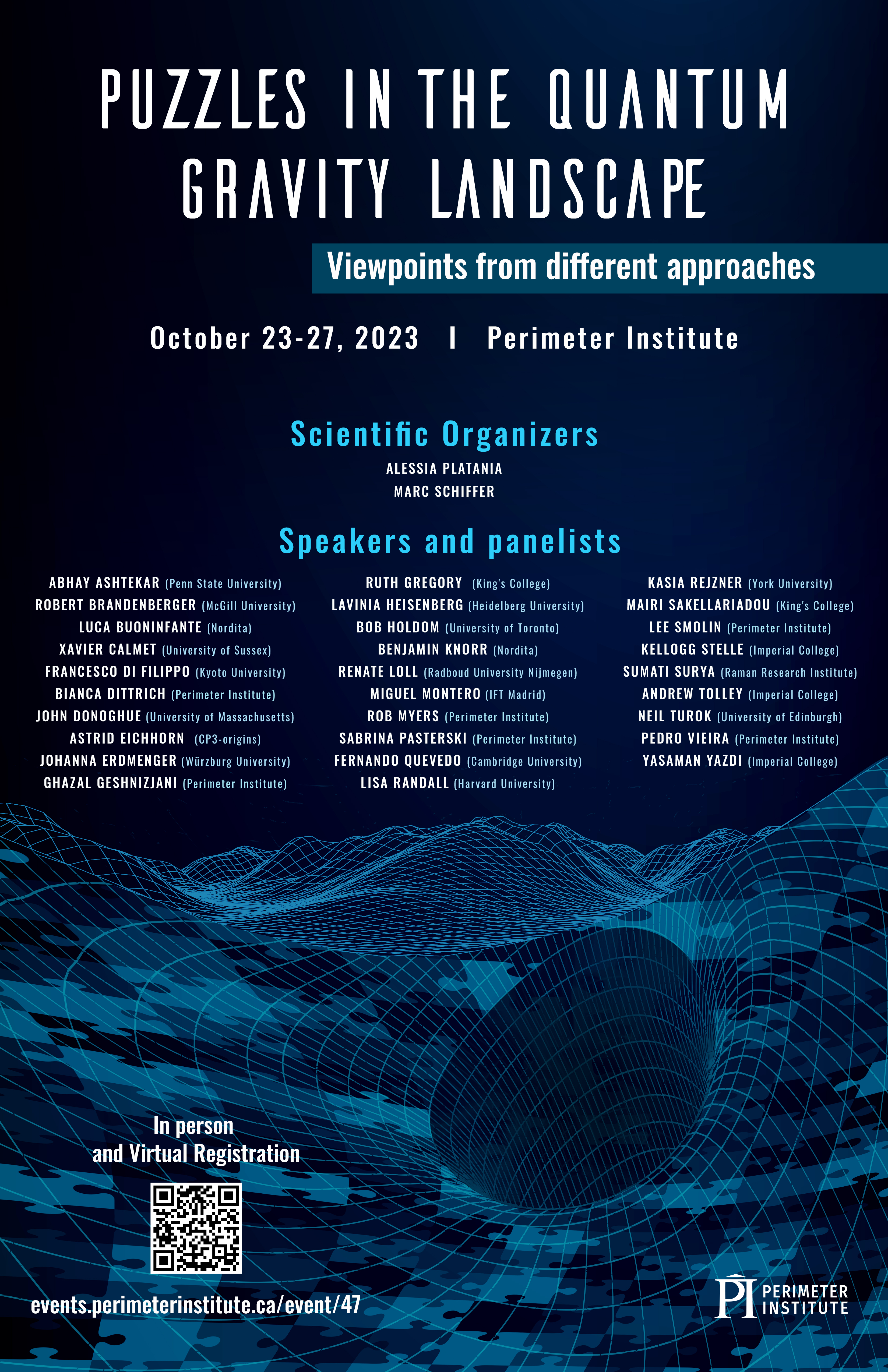
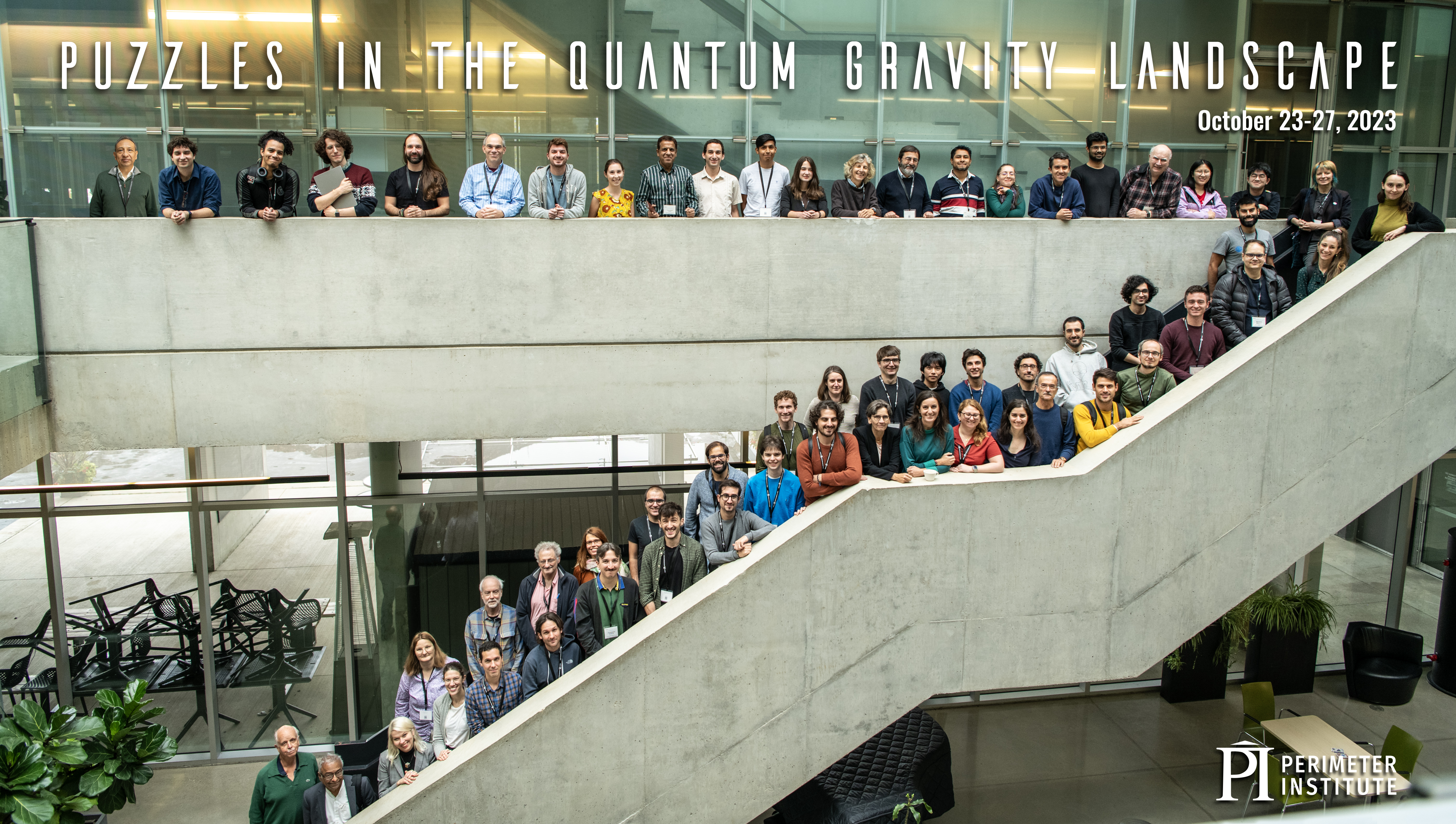
Territorial Land Acknowledgement
Perimeter Institute acknowledges that it is situated on the traditional territory of the Anishinaabe, Haudenosaunee, and Neutral peoples.
Perimeter Institute is located on the Haldimand Tract. After the American Revolution, the tract was granted by the British to the Six Nations of the Grand River and the Mississaugas of the Credit First Nation as compensation for their role in the war and for the loss of their traditional lands in upstate New York. Of the 950,000 acres granted to the Haudenosaunee, less than 5 percent remains Six Nations land. Only 6,100 acres remain Mississaugas of the Credit land.
We thank the Anishinaabe, Haudenosaunee, and Neutral peoples for hosting us on their land.
-
QPV 2023: Advances in quantum position verification
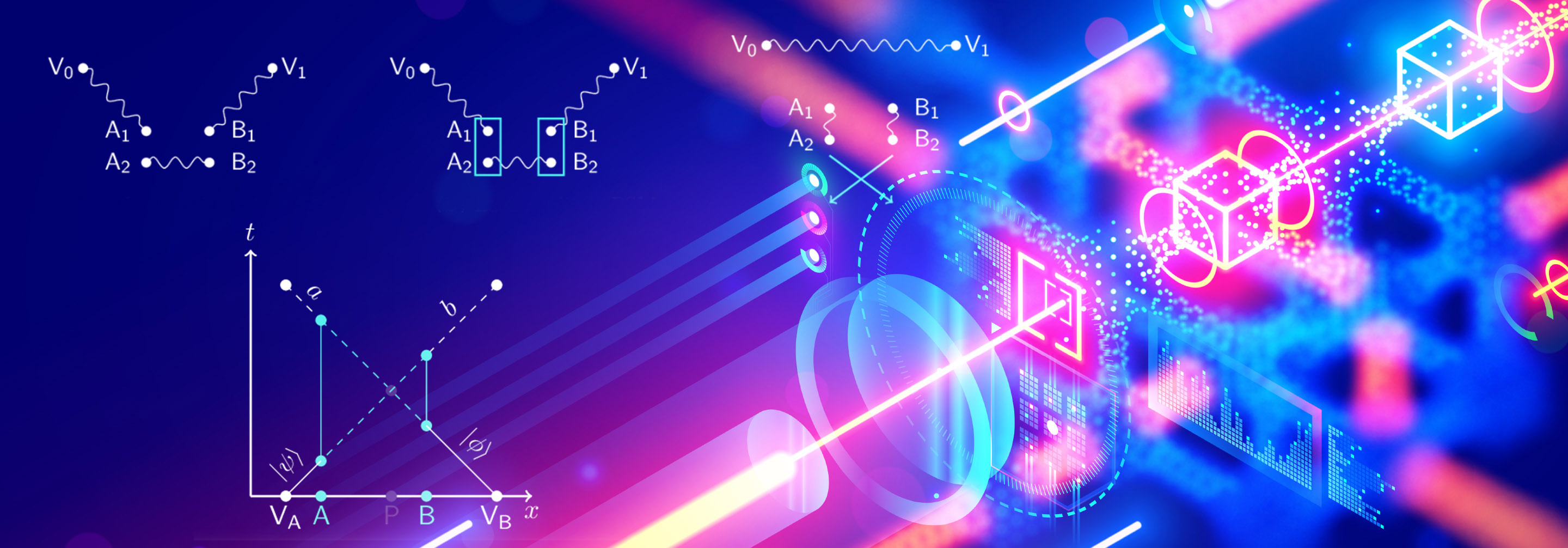
Quantum position verification (QPV) schemes use the properties of quantum information and the relativistic signalling bound to verify the location of an object (sometimes called a “tag”) to distant observers in an environment that may contain would-be spoofers. The guarantee is based on the assumptions of the underlying security model; various theoretically and practically interesting security models have been proposed. The area is attracting increasing interest, with new theoretical developments in security analyses, emerging experimental studies of QPV systems, and recently discovered surprising and intriguing connections to topics in quantum gravity. A workshop on QPV will be held at the Perimeter Institute for Theoretical Physics.
The workshop will cover topics related to all aspects of QPV, including, but not limited to:
- Theoretical developments related to the security of QPV schemes, including development or refinement of security models, proofs of security within given models, tradeoffs between security and efficiency, and Experimental studies of QPV and theoretical work aimed at developing practical QPV schemes.
- QPV’s relationship to other cryptographic tasks and primitives.
- QPV’s relationship to holography and quantum gravity.

Territorial Land Acknowledgement
Perimeter Institute acknowledges that it is situated on the traditional territory of the Anishinaabe, Haudenosaunee, and Neutral peoples.
Perimeter Institute is located on the Haldimand Tract. After the American Revolution, the tract was granted by the British to the Six Nations of the Grand River and the Mississaugas of the Credit First Nation as compensation for their role in the war and for the loss of their traditional lands in upstate New York. Of the 950,000 acres granted to the Haudenosaunee, less than 5 percent remains Six Nations land. Only 6,100 acres remain Mississaugas of the Credit land.
We thank the Anishinaabe, Haudenosaunee, and Neutral peoples for hosting us on their land.
-
It from Qubit 2023
The final meeting of It from Qubit: Simons Collaboration on Quantum Fields, Gravity, and Information will be devoted to recent developments at the interface of fundamental physics and quantum information theory, spanning topics such as
- chaos and thermalization in many-body systems and their realization in quantum gravity;
- information-theoretic constraints on quantum field theories and their RG flows and symmetries;
- gravitational wormholes and their information-theoretic implications;
- calculable lower-dimensional models of quantum gravity; the entanglement structure of semi-classical states in quantum gravity;
- quantum error-correcting codes in quantum field theory and quantum gravity;
- complexity in field theory and gravity;
- the black-hole information puzzle;
- quantum simulation of quantum field theories and quantum gravity.
Recorded talks: https://pirsa.org/C23021
Territorial Land Acknowledgement
Perimeter Institute acknowledges that it is situated on the traditional territory of the Anishinaabe, Haudenosaunee, and Neutral peoples.
Perimeter Institute is located on the Haldimand Tract. After the American Revolution, the tract was granted by the British to the Six Nations of the Grand River and the Mississaugas of the Credit First Nation as compensation for their role in the war and for the loss of their traditional lands in upstate New York. Of the 950,000 acres granted to the Haudenosaunee, less than 5 percent remains Six Nations land. Only 6,100 acres remain Mississaugas of the Credit land.
We thank the Anishinaabe, Haudenosaunee, and Neutral peoples for hosting us on their land.
-
Strings 2023
The Perimeter Institute for Theoretical Physics is delighted to host the 33rd installment of Strings, the flagship annual conference for the extended string theory community.
Strings 2023 will take place at PI July 24-29. Capacity is limited to 200 in-person attendees. The programming will incorporate an interactive simulcast for virtual attendees.Recorded talks: https://pirsa.org/C23001
Organizing Committee: Sabrina Pasterski,* Freddy Cachazo, Kevin Costello, Davide Gaiotto, Jaume Gomis, Rob Myers, Pedro Vieira, & Alex Buchel.
Territorial Land Acknowledgement
Perimeter Institute acknowledges that it is situated on the traditional territory of the Anishinaabe, Haudenosaunee, and Neutral peoples.
Perimeter Institute is located on the Haldimand Tract. After the American Revolution, the tract was granted by the British to the Six Nations of the Grand River and the Mississaugas of the Credit First Nation as compensation for their role in the war and for the loss of their traditional lands in upstate New York. Of the 950,000 acres granted to the Haudenosaunee, less than 5 percent remains Six Nations land. Only 6,100 acres remain Mississaugas of the Credit land.
-
TRISEP 2023
Talks are recorded and posted on PIRSA (within approx 24 hours).
The 2023 Tri-Institute Summer School on Elementary Particles (TRISEP) will be held June 19-30, 2023 in Perimeter Institute for Theoretical Physics, Waterloo, ON, Canada.
TRISEP is an international summer school organized jointly by the Perimeter Institute for Theoretical Physics, SNOLAB, and TRIUMF Canada's laboratory for particle and nuclear physics. TRISEP will feature lectures by leading experts in the field of particle physics in its broadest sense and is designed to be very interactive with ample time for questions, discussions and interaction with the speakers. The school is intended for graduate students of all levels who were already exposed to quantum field theory.Registration for in person attendance to TRISEP is now open. Anyone requiring financial assistance to attend must apply by May 19. Requests for financial assistance are vetted on a case-by-case basis and application for funding is not guaranteed.
Previous TRISEP Schools:
2022, 2021, 2019, 2018, 2017, 2016, 2015, 2014 and 2013.
Territorial Land AcknowledgementPerimeter Institute acknowledges that it is situated on the traditional territory of the Anishinaabe, Haudenosaunee, and Neutral peoples.
Perimeter Institute is located on the Haldimand Tract. After the American Revolution, the tract was granted by the British to the Six Nations of the Grand River and the Mississaugas of the Credit First Nation as compensation for their role in the war and for the loss of their traditional lands in upstate New York. Of the 950,000 acres granted to the Haudenosaunee, less than 5 percent remains Six Nations land. Only 6,100 acres remain Mississaugas of the Credit land.
We thank the Anishinaabe, Haudenosaunee, and Neutral peoples for hosting us on their land.
-
Machine Learning for Quantum Many-Body Systems
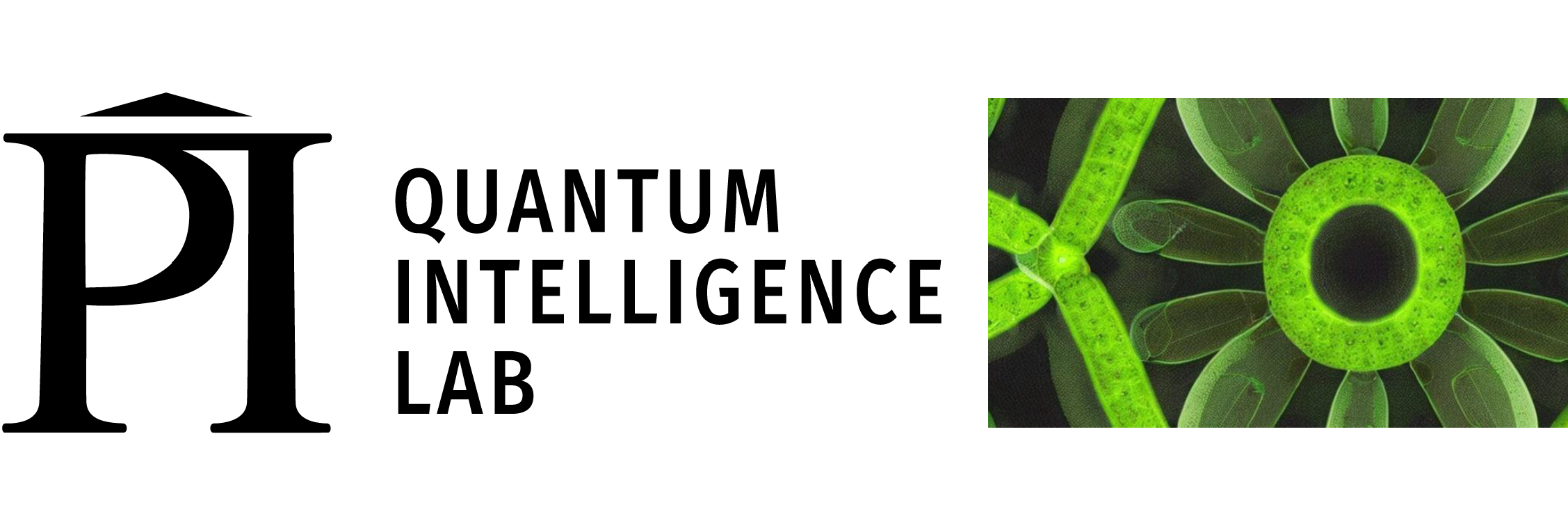 Machine learning techniques are rapidly being adopted into the field of quantum many-body physics, including condensed matter theory, experiment, and quantum information science. The steady increase in data being produced by highly-controlled quantum experiments brings the potential of machine learning algorithms to the forefront of scientific advancement. Particularly exciting is the prospect of using machine learning for the discovery and design of molecules, quantum materials, synthetic matter, and computers. In order to make progress, the field must address a number of fundamental questions related to the challenges of studying many-body quantum mechanics using classical computing algorithms and hardware.
Machine learning techniques are rapidly being adopted into the field of quantum many-body physics, including condensed matter theory, experiment, and quantum information science. The steady increase in data being produced by highly-controlled quantum experiments brings the potential of machine learning algorithms to the forefront of scientific advancement. Particularly exciting is the prospect of using machine learning for the discovery and design of molecules, quantum materials, synthetic matter, and computers. In order to make progress, the field must address a number of fundamental questions related to the challenges of studying many-body quantum mechanics using classical computing algorithms and hardware.
The goal of this conference is to bring together experts in computational physics, machine learning, and quantum information, to make headway on a number of related topics, including:
- Data-drive quantum state reconstruction
- Machine learning strategies for quantum error correction and quantum control
- Neural-network inspired wavefunctions
- Near-term prospects for data from quantum devices
- Machine learning for quantum algorithm discovery
Territorial Land AcknowledgementPerimeter Institute acknowledges that it is situated on the traditional territory of the Anishinaabe, Haudenosaunee, and Neutral peoples.
Perimeter Institute is located on the Haldimand Tract. After the American Revolution, the tract was granted by the British to the Six Nations of the Grand River and the Mississaugas of the Credit First Nation as compensation for their role in the war and for the loss of their traditional lands in upstate New York. Of the 950,000 acres granted to the Haudenosaunee, less than 5 percent remains Six Nations land. Only 6,100 acres remain Mississaugas of the Credit land.
We thank the Anishinaabe, Haudenosaunee, and Neutral peoples for hosting us on their land.
-
Quantum Simulators of Fundamental Physics
This meeting will bring together researchers from the quantum technology, atomic physics, and fundamental physics communities to discuss how quantum simulation can be used to gain new insight into the physics of black holes and the early Universe. The core program of the workshop is intended to deepen collaboration between the UK-based Quantum Simulators for Fundamental Physics (QSimFP; https://www.qsimfp.org) consortium and researchers at Perimeter Institute and neighbouring institutions. The week-long conference will consist of broadly-accessible talks on work within the consortium and work within the broader community of researchers interested in quantum simulation, as well as a poster session and ample time for discussion and collaboration
Territorial Land AcknowledgementPerimeter Institute acknowledges that it is situated on the traditional territory of the Anishinaabe, Haudenosaunee, and Neutral peoples.
Perimeter Institute is located on the Haldimand Tract. After the American Revolution, the tract was granted by the British to the Six Nations of the Grand River and the Mississaugas of the Credit First Nation as compensation for their role in the war and for the loss of their traditional lands in upstate New York. Of the 950,000 acres granted to the Haudenosaunee, less than 5 percent remains Six Nations land. Only 6,100 acres remain Mississaugas of the Credit land.
We thank the Anishinaabe, Haudenosaunee, and Neutral peoples for hosting us on their land.
-
Quantum and AI Career Trajectories Mini-Course: Computational Methods and their Applications
On Demand Recordings: https://pirsa.org/C23034
All sessions are available ONLINE except for those sessions in YELLOW blocks in the timeteable.
Research at the intersection of quantum physics and artificial intelligence is rapidly growing in academia and industry. This one-week mini-course will introduce a selection of computational methods currently being applied in quantum industry settings and will highlight career opportunities outside of academia for students and researchers with a background in quantum theory and computational physics. The course will consist of two lecture series: one on generative modeling (including restricted Boltzmann machines, neural autoregressive distribution estimators, and recurrent neural networks) by Perimeter researchers Roger Melko and Mohamed Hibat Allah, and another lecture series on tensor networks and quantum algorithms by Martin Ganahl of SandboxAQ. Afternoons will include coding tutorials, workshops, talks from speakers who have transitioned from academia to quantum industry, and career networking opportunities.
Confirmed guests for the Industry networking session are:
- 1QBit
- Agnostiq
- Amazon Web Services
- IBM Quantum
- Nord Quantique
- Quantum Valley Ideas Laboratories
- SandboxAQ
- Xanadu
- YiyaniQ
- ZebraKet
This mini-course will assume that participants have the following prerequisites:
-
Graduate-level knowledge of quantum mechanics (including wavefunctions, single-body quantum mechanics, Hamiltonians, density matrices, time evolution, and angular momentum) and statistical mechanics (including partition functions, the Ising model, and phase transitions),
-
Knowledge of introductory machine learning methods (see, for instance, Lectures 1-6 of Perimeter’s course on Machine Learning for Many-Body Physics), and
-
Basic programming skills in Python.
Territorial Land Acknowledgement
Perimeter Institute acknowledges that it is situated on the traditional territory of the Anishinaabe, Haudenosaunee, and Neutral peoples.
Perimeter Institute is located on the Haldimand Tract. After the American Revolution, the tract was granted by the British to the Six Nations of the Grand River and the Mississaugas of the Credit First Nation as compensation for their role in the war and for the loss of their traditional lands in upstate New York. Of the 950,000 acres granted to the Haudenosaunee, less than 5 percent remains Six Nations land. Only 6,100 acres remain Mississaugas of the Credit land.
We thank the Anishinaabe, Haudenosaunee, and Neutral peoples for hosting us on their land.
-
Quantum Spacetime in the Cosmos: From Conception to Reality
On Demand Recording: https://pirsa.org/C23035
The nature of space and time is one of the most foundational mysteries in both Physics and Philosophy. At the heart of this mystery are the two most successful theories of nature: Einstein's theory of relativity, an elegant and precise description of the geometry of our universe on large scales, and Quantum Mechanics, outlining accurate laws of interaction in the subatomic world. But these two great triumphs of 20th century physics remain inherently inconsistent, contradictory in their most basic principles, such as locality and causality. Nonetheless, the experimental domains or natural phenomena where these contradictions become manifest have remained elusive, and it is not clear that a century of theoretical investigation into quantum gravity is anywhere close to being verified in nature.
Arguably, this disconnect is our greatest and most foundational challenge in the history of Physics; despite groundbreaking progress in both theory and observations of quantum spacetimes, these two endeavours are moving farther apart. Successfully responding to this century-old challenge could require rethinking the epistemology of fundamental physics. While physicists are trained to push the frontiers of knowledge, developing a grand vision of the arch of history, and where we are (or should be) heading is a more interdisciplinary endeavor, requiring insights from theory and observations, but also philosophy and history.
We plan a focused, interactive, and highly interdisciplinary workshop, involving the world’s best theorists, observers, experimentalists, and philosophers, within a supportive, inclusive, and diverse environment, in order to kick start a long term initiative that might be our best bet to make significant progress towards uncovering the quantum nature of spacetime.Sponsorship provided by:
Territorial Land AcknowledgemenPerimeter Institute acknowledges that it is situated on the traditional territory of the Anishinaabe, Haudenosaunee, and Neutral peoples.
Perimeter Institute is located on the Haldimand Tract. After the American Revolution, the tract was granted by the British to the Six Nations of the Grand River and the Mississaugas of the Credit First Nation as compensation for their role in the war and for the loss of their traditional lands in upstate New York. Of the 950,000 acres granted to the Haudenosaunee, less than 5 percent remains Six Nations land. Only 6,100 acres remain Mississaugas of the Credit land.
We thank the Anishinaabe, Haudenosaunee, and Neutral peoples for hosting us on their land.
-
Mini-Course of Numerical Conformal Bootstrap
This school will be an advanced course on the numerical bootstrap. In the lectures, we will discuss advanced theoretical aspects of numerical bootstrap and algorithms. In the tutorials, we will demonstrate how to use simpleboot/hyperion and help the participants to run bootstrap computation on their own clusters. Main examples are 3D Ising, O(2), O(3), Gross-Neveu-Yukawa CFTs.
The school will consist of one lecture in the morning and two tutorials in the afternoon (one tutorial for simpleboot (by Ning Su) and another one for hyperion (by Aike Liu).
Course materials, including tutorials, slides, and sample codes, can be found at https://gitlab.com/AikeLiu/Bootstrap-Mini-Course
This event is supported by the Simons Collaboration on The Nonperturbative Bootstrap (https://bootstrapcollaboration.com/).
Territorial Land Acknowledgement
Perimeter Institute acknowledges that it is situated on the traditional territory of the Anishinaabe, Haudenosaunee, and Neutral peoples.
Perimeter Institute is located on the Haldimand Tract. After the American Revolution, the tract was granted by the British to the Six Nations of the Grand River and the Mississaugas of the Credit First Nation as compensation for their role in the war and for the loss of their traditional lands in upstate New York. Of the 950,000 acres granted to the Haudenosaunee, less than 5 percent remains Six Nations land. Only 6,100 acres remain Mississaugas of the Credit land.
We thank the Anishinaabe, Haudenosaunee, and Neutral peoples for hosting us on their land.
-
Causal Inference & Quantum Foundations Workshop
Recently we have seen exciting results at the intersection of quantum foundations and the statistical analysis of causal hypotheses by virtue of the centrality of latent variable models to both fields.
In this workshop we will explore how academics from both sides can move the shared frontiers forward. Towards that end, we are including extensive breakout collaboration opportunities in addition to formal presentations. In order to make concrete progress on problems pertinent to both communities, we have selected the topic of causal models with restricted cardinality of the latent variables as a special focus for this workshop.
Sponsorship for this workshop has been provided by:
Territorial Land Acknowledgement
Perimeter Institute acknowledges that it is situated on the traditional territory of the Anishinaabe, Haudenosaunee, and Neutral peoples.
Perimeter Institute is located on the Haldimand Tract. After the American Revolution, the tract was granted by the British to the Six Nations of the Grand River and the Mississaugas of the Credit First Nation as compensation for their role in the war and for the loss of their traditional lands in upstate New York. Of the 950,000 acres granted to the Haudenosaunee, less than 5 percent remains Six Nations land. Only 6,100 acres remain Mississaugas of the Credit land.
We thank the Anishinaabe, Haudenosaunee, and Neutral peoples for hosting us on their land.


